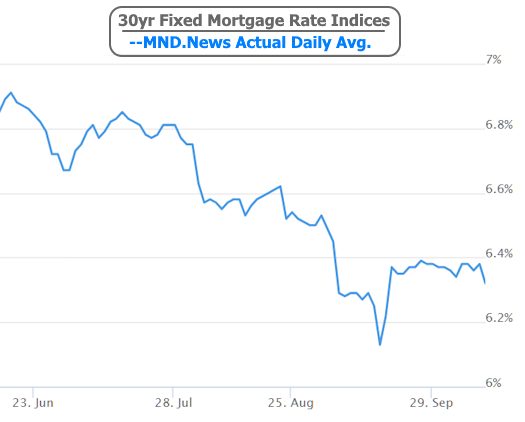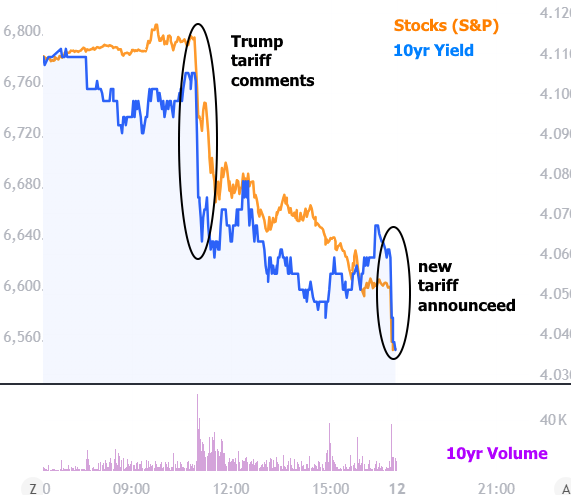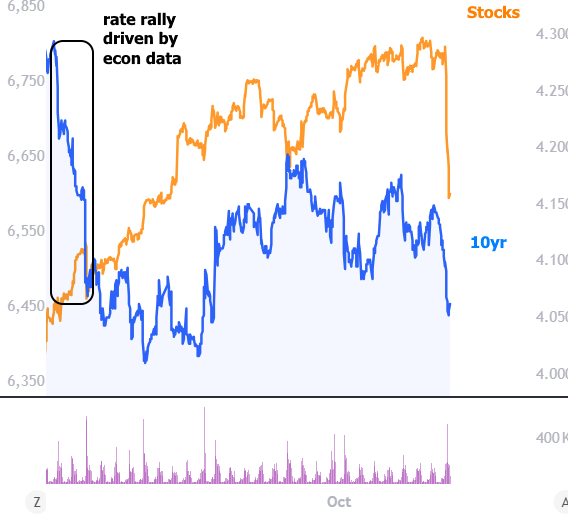Rates have been very flat since September 19th, with the average lender holding inside a tiny 0.05% range through this past Thursday. To put that in context, on September 18th alone (the day after the Fed announcement), rates rose 0.15%.
While we're not seeing anything nearly as brisk at present, Friday brought a bit of a departure from the recent monotony with rates finally breaking that narrow range. Even though the breakout only expanded the range by 0.02%, it was more memorable for a few reasons.

Reason One: Friday's gains didn't just expand the recent range. They also traversed it entirely, moving from being roughly in line with the highs to making new lows on a single day.
Reason Two: Unlike any other day of the past 3 weeks, Friday's rate movement can easily be tied to a single, obvious, underlying event.
The event in question was a statement from The President regarding trade relations with China saying there was no reason to meet with China's President Xi and that the administration is currently calculating a massive increase in Chinese tariffs.
Markets reacted with the biggest stock sell-off since April and the aforementioned rally in the rate market. It remains to be seen how this will ultimately play out, but it took investors by surprise as they were tuning out for a 3 day holiday weekend.

Keep in mind that tariffs have been a double-edged sword for rates. At times, they've helped due to their economic implications. Other times, they've hurt rates due to inflation implications. Friday's reaction may have had more to do with the sell-off in the stock market spilling over into demand for bonds (which, in turn, pushes rates lower).
Note the relative impact on stocks vs bonds when we zoom the chart out to include the reaction to the jobs report in early September:

All that to say, there's no reason to assume Friday's momentum will continue in the coming week. The only reliable, large-scale inspiration for rates would be a bona fide shift in the economy--something that will be hard to confirm until the shutdown ends, thus allowing reports like the jobs report to be released again.








